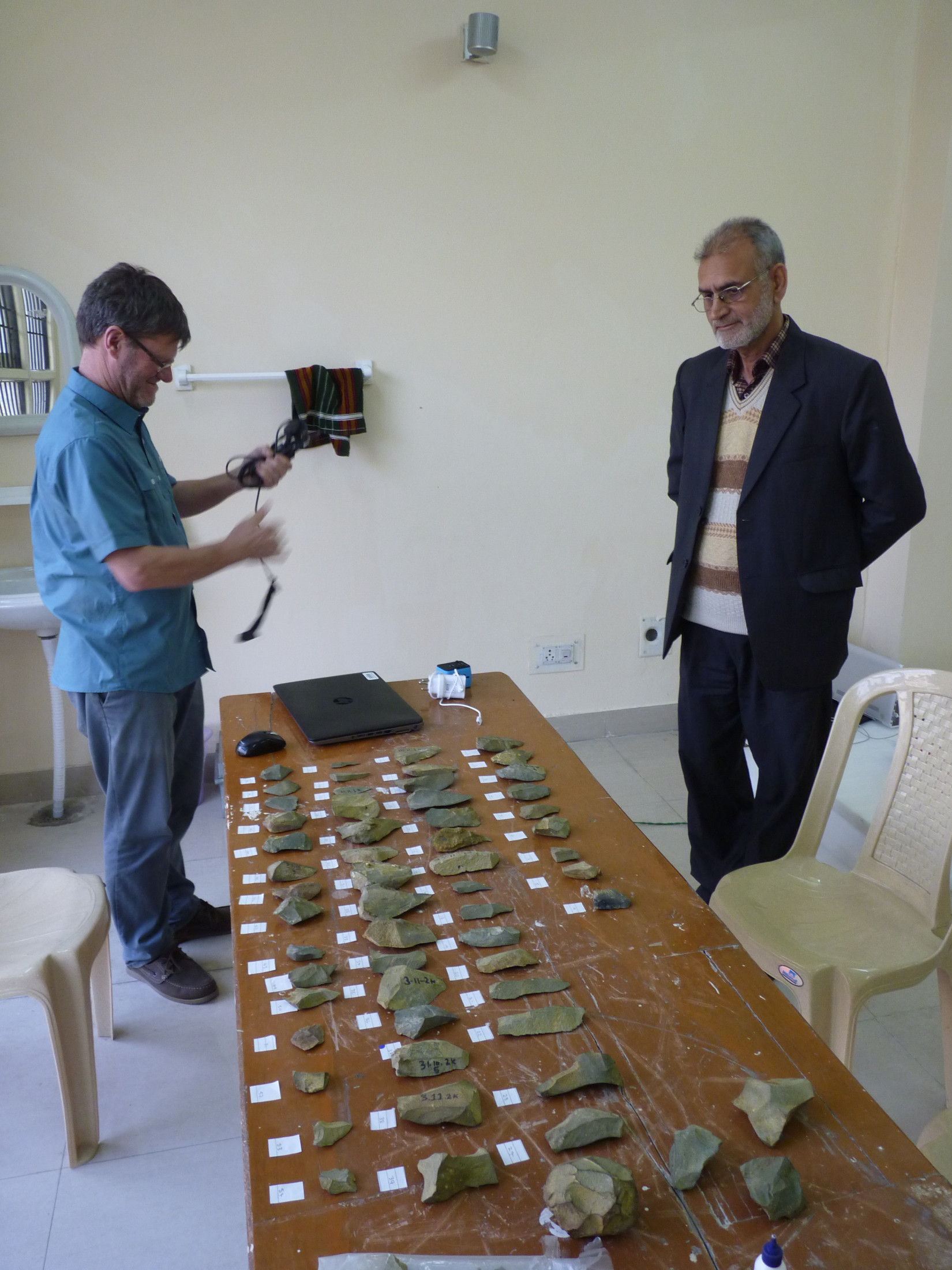In the worlds of extinct elephant species and ancient humans, the science powers that be have granted us a rare double whammy. Not only have researchers identified the remains of an ancient elephant species from some pretty incredible fossils, but those fossils have revealed how they might have provided a food source to early humans living in the area.
The elephant fossils themselves were found in 2000 in Pampore in the Kashmir Valley, India, and date back to between 300,00 and 400,000 years ago. However, quite which species the fossils belonged to, and the fact that humans had been involved with the bones was only discovered recently.
A new analysis has revealed that early humans might have struck the elephant bones to extract the marrow for food – this is a very energy-dense fatty tissue.
Flakes from the elephant’s bones have revealed that this is the earliest evidence of animal butchery in India.
“We interpret this specimen as an impact flake resulting from repeated hammering of an elephant bone with a stone implement,” write the authors in their paper.
“Initially, the bone was struck several times in an attempt to initiate the fracture. However, these initial attempts failed, requiring a subsequent, more forceful blow, possibly with a heavier hammerstone, to fully fracture the bone. The overall morphology of this flake closely resembles an impact flake produced in [previous] marrow processing experiments.”
The discovery is even more unusual because there is very little evidence of hominins from the Indian subcontinent and only one fossil hominin has ever been found there. The finding of 87 stone tools alongside the bones helps the researchers piece together how these early human ancestors might have been living.
“So, the question is, who are these hominins? What are they doing on the landscape and are they going after big game or not?” study author and curator of vertebrate paleontology at the Florida Museum of Natural History Advait Jukar said in a statement. “Now we know for sure, at least in the Kashmir Valley, these hominins are eating elephants.”
The mystery deepens because the stone tools likely used to extract the marrow from the elephant bones were made of a material called basalt. This type of rock is not found in the same area, therefore the team think that the basalt was brought in from elsewhere before being made into tools by the early hominins. Based on this, the team think the tools and the site are around 300,000 to 400,000 years old.
Eighty-seven stone tools were collected from the site and some were likely used to spilt the bones of the elephant to get to the marrow.
Image Credit: Florida Museum. Photo courtesy of Advait Jukar.
“It might just be that people haven’t looked closely enough or are sampling in the wrong place,” Jukar said. “But up until now, there hasn’t been any direct evidence of humans feeding on large animals in India.”
While the bones suggest the early humans may have been eating the marrow, there is no evidence on the bones of hunting, such as spear tips. The hominins could have killed the elephant, or could have discovered it after it died.
The team even think there could be more evidence of butchery out there waiting to be discovered.
“The thing I’ve come to realize after many years is that you just need a lot more effort to go and find the sites, and you need to essentially survey and collect everything,” Jukar said. “Back in the day when people collected fossils, they only collected the good skulls or limb bones. They didn’t collect all the shattered bone, which might be more indicative of flakes or breakage made by people.”
The bones themselves are also extraordinary. They belonged to a genus of huge ancient elephants that are known as Palaeoloxodon. This genus is long extinct but when they roamed the Earth it would have been more than twice the weight of today’s living African elephants.
The particular individual the bones belong to is thought to have been one large male mature Palaeoloxodon but two others are also represented in the fossils including at least one juvenile.
The research also revealed that there is a bit of abnormal bone growth within the skull of the Palaeoloxodon, which could have been caused by a chronic sinus infection. This bone growth caused by infection is called periostitis and is well documented in human skeleton remains. The team have also identified the species as Palaeoloxodon turkmenicus, of which only one other less complete fossil exists.
The Palaeoloxodon genus is interesting because the elephants have enormous foreheads with a crest. Earlier species from Africa do not have the bulge, while P. turkmenicus is in the middle with a large forehead but a greatly reduced crest.
“It shows this kind of intermediate stage in Palaeoloxodon evolution,” Jukar said. “The specimen could help paleontologists fill in the story of how the genus migrated and evolved.”
The research is published as a pair of papers in Quaternary Science Reviews and the Journal of Vertebrate Paleontology.
Source Link: Ancient Hominins Ate Giant Elephant, Earliest Evidence Of Animal Butchery In India Reveals
